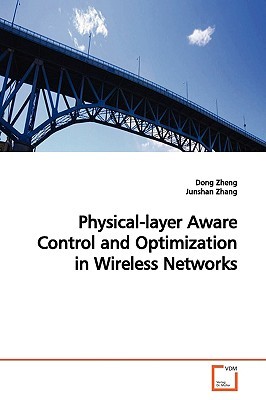
- We will send in 10–14 business days.
- Author: Dong Zheng
- Publisher: VDM Verlag
- ISBN-10: 3639134346
- ISBN-13: 9783639134346
- Format: 15.2 x 22.9 x 1.4 cm, softcover
- Language: English
- SAVE -10% with code: EXTRA
Physical-layer Aware Control and Optimization in Wireless Networks (e-book) (used book) | bookbook.eu
Reviews
Description
With the explosive growth in demand for wireless services, the next generation wireless networks are expected to provide solutions to cost-effective, ubiquitous, always-on broadband access. There has been a general consensus that developing network-level solutions that take advantage of the interplay between the physical-layer and the upper protocol layers would yield significant performance gains. Thus motivated, a common thread of this book is to study physical- layer aware control and optimization in stochastic wireless networks. Specifically, we want to obtain a fundamental understanding of the following issues: How can we take advantages of rich diversities such as time/multi-user/multi-channel degrees of freedom in wireless networks? How can we develop distributed algorithms of joint rate control and MAC design for end-to-end QoS provisioning? Are these distributed algorithms stable in the presence of stochastic noisy feedback? A principal objective of this book is to develop systematic frameworks for solving these issues.
EXTRA 10 % discount with code: EXTRA
The promotion ends in 17d.00:24:06
The discount code is valid when purchasing from 10 €. Discounts do not stack.
- Author: Dong Zheng
- Publisher: VDM Verlag
- ISBN-10: 3639134346
- ISBN-13: 9783639134346
- Format: 15.2 x 22.9 x 1.4 cm, softcover
- Language: English English
With the explosive growth in demand for wireless services, the next generation wireless networks are expected to provide solutions to cost-effective, ubiquitous, always-on broadband access. There has been a general consensus that developing network-level solutions that take advantage of the interplay between the physical-layer and the upper protocol layers would yield significant performance gains. Thus motivated, a common thread of this book is to study physical- layer aware control and optimization in stochastic wireless networks. Specifically, we want to obtain a fundamental understanding of the following issues: How can we take advantages of rich diversities such as time/multi-user/multi-channel degrees of freedom in wireless networks? How can we develop distributed algorithms of joint rate control and MAC design for end-to-end QoS provisioning? Are these distributed algorithms stable in the presence of stochastic noisy feedback? A principal objective of this book is to develop systematic frameworks for solving these issues.


Reviews